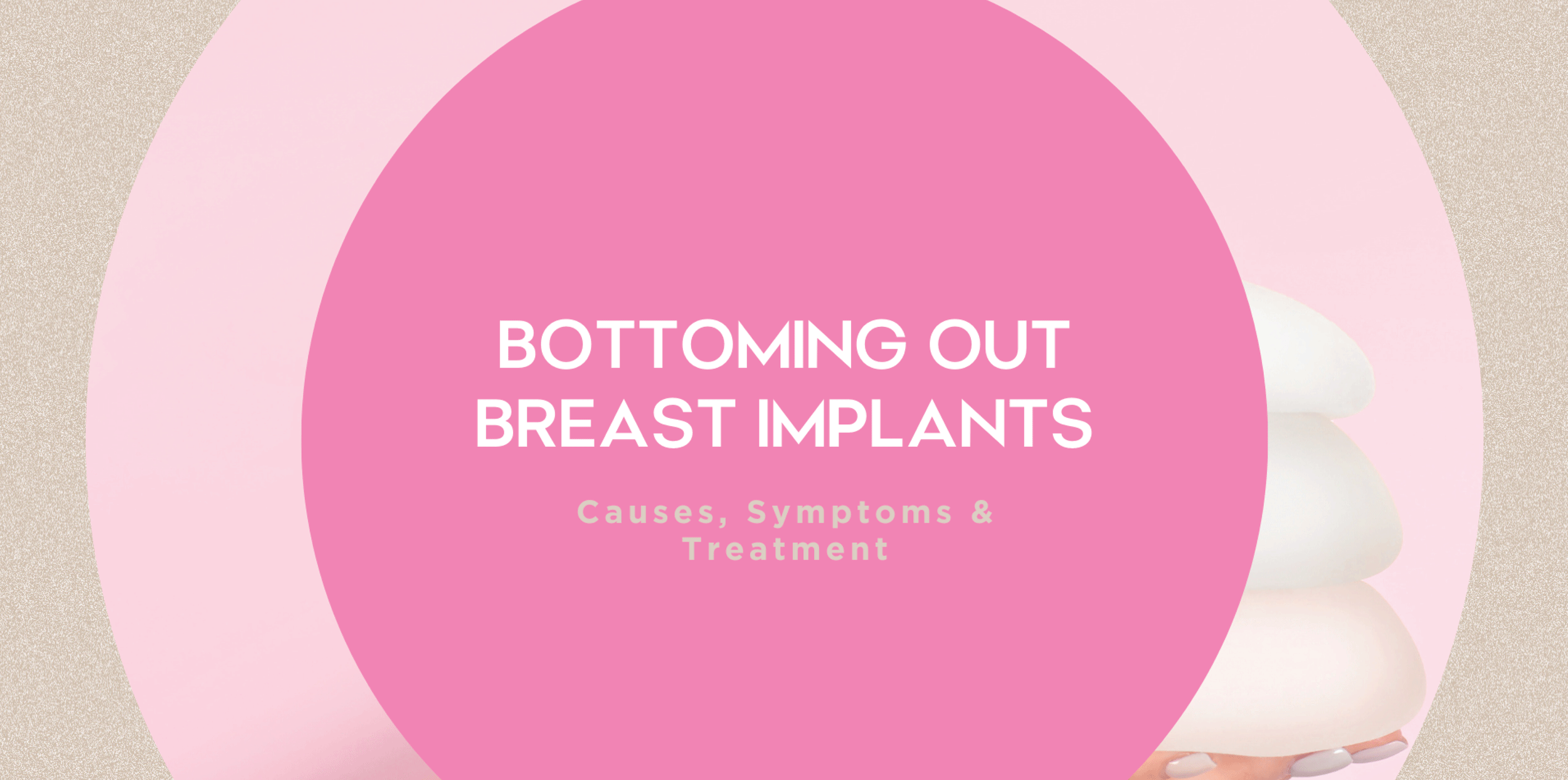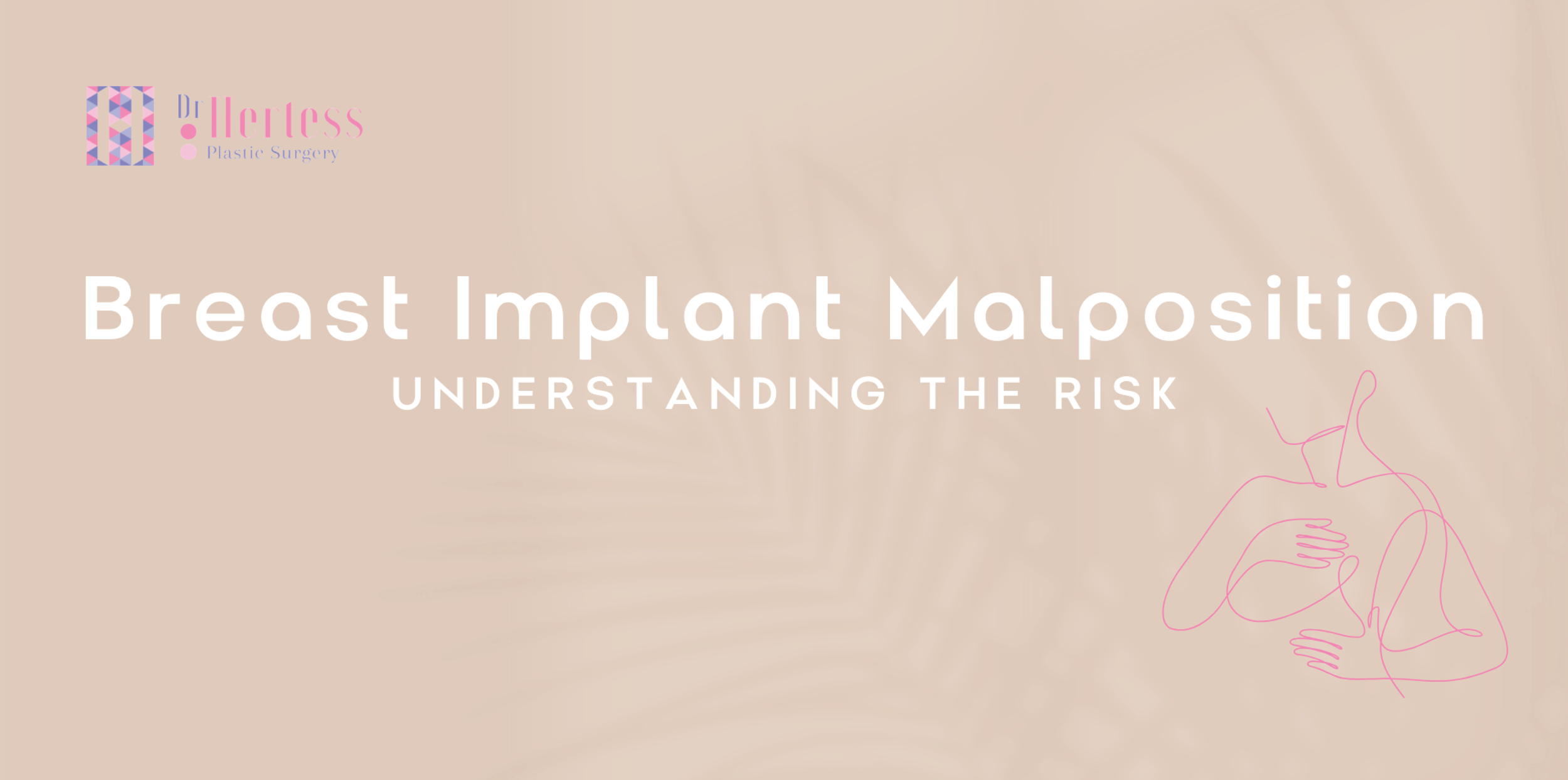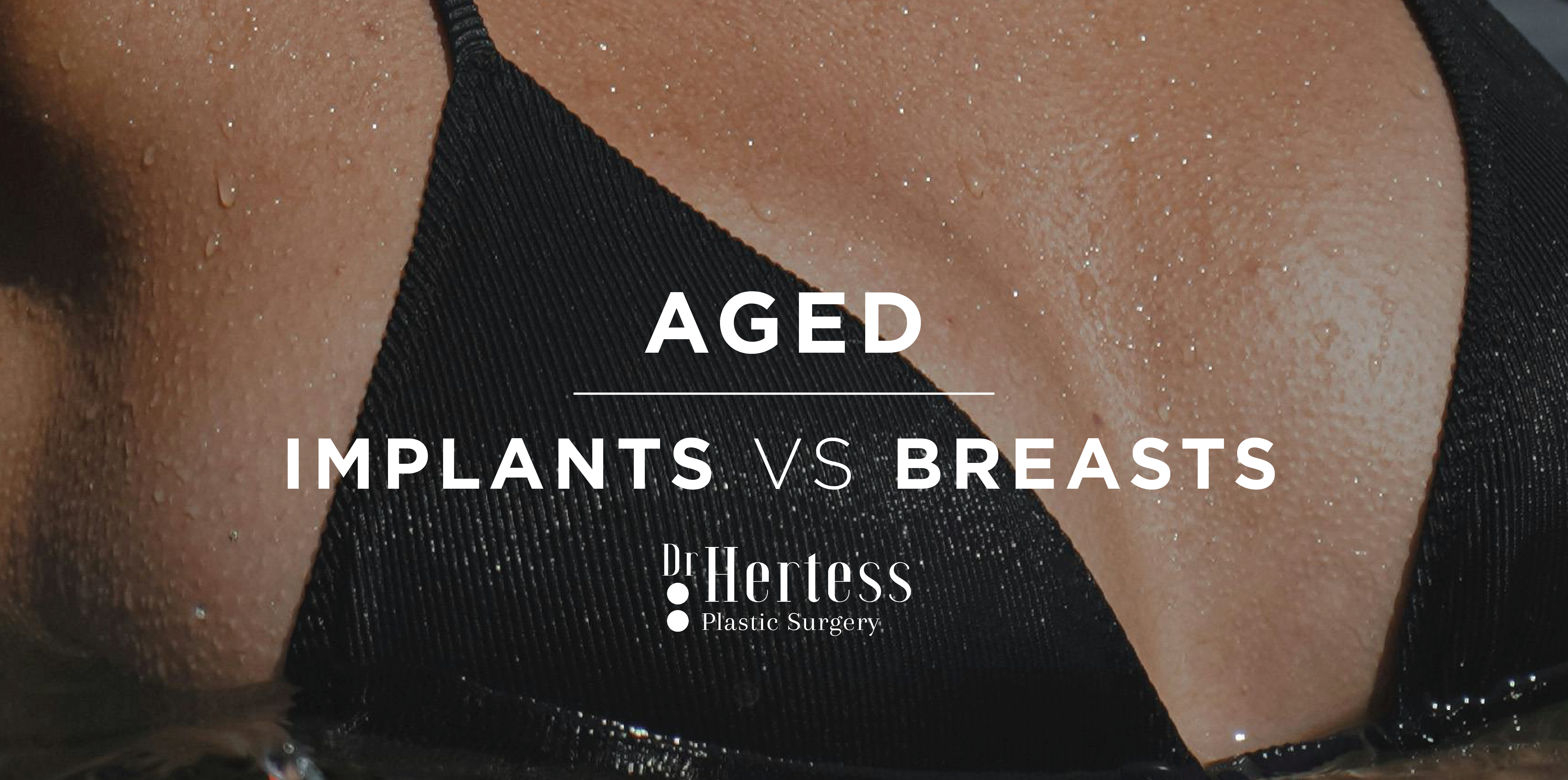Bottoming Out Breast Implants - Causes, Symptoms & Treatment

All surgical breast procedures, such as breast augmentation, breast lift, or breast revision, carry risk. Patients need to understand the potential complications that may occur. One of these potential complications is known as 'bottoming-out', a form of implant displacement that can happen both a short and long while after surgery.
Bottom out or 'breast implant sinking' happens when the breast implant descends below the natural crease of the breast, causing the implants to bulge unnaturally. In other words, one or both implants drop lower than they should.
Specialist Plastic Surgeon, Dr Hertess is an expert in diagnosing and correcting the bottoming out implant deformity through revision surgery. If you have concerns about fold malposition breast implants, always consult a specialist.
 Dr Hertess (MED0001372020) Registered Medical Practitioner, Specialist Plastic Surgeon (Specialist Registration in Surgery - Plastic Surgery).
Dr Hertess (MED0001372020) Registered Medical Practitioner, Specialist Plastic Surgeon (Specialist Registration in Surgery - Plastic Surgery).
What is Implant Bottoming Out?
Image 1: Bottoming out of breast implants. Real patient of Dr Hertess Specialist Plastic Surgeon.
Bottom out is a term used to describe a particular complication that can occur after breast implant surgery.
"Think of it as the implant slipping or settling too low on the chest wall, giving the breasts an unusually low appearance," says Dr Hertess.
You may be able to see or feel your breast implant at the bottom of your breast.
It's important to note that an implant hasn't 'bottomed out' if it remains above the breast crease. Rather, this may indicate a double bubble deformity.
What Causes Bottoming Out Implants?
Bottomed-out implants can occur for several reasons, including:
Skin Integrity
Your skin's strength and 'bounce-back' ability (skin integrity) play an important role in regards to this complication. If your skin is weakened by age, massive weight loss, or past surgeries, it may struggle to hold up the implants. This leads to a higher risk of implants bottoming out.
Implant Size
Implants that are too large, heavy or wide relative to your body frame can put too much pressure on the skin and underlying structures. This can overwhelm the natural support system of the breasts, causing a higher chance of your breast implant falling out of pocket.
Placement
The position where the implants are placed during surgery significantly impacts their likelihood of bottoming out. Over-the-muscle placement (subglandular) may not offer as much support as under-the-muscle placement (submuscular), making the implants more susceptible to falling out of place.
Symptoms of Bottomed-Out Implants

Image 2: Bottoming out of breast implants. Real patient of Dr Hertess Specialist Plastic Surgeon.
The most common sign your implants may have bottomed out is when the nipple appears too high on the breast mound, or when you can visibly see the implant below the natural breast crease. Other symptoms may include discomfort, pain, and a feeling of heaviness in the breasts.
If you experience any of these symptoms, it's essential to consult with your surgeon for proper diagnosis and treatment options.
Treatment Options for Bottomed Out Breast Implants

Image 3: Removal and replacement of implants due to bottoming out of left breast implant. Replacement implants were Eurosil 400cc. Real patient of Dr Hertess Specialist Plastic Surgeon.
The first step in treating bottomed-out breast implants is to address the underlying cause. In all cases, revision surgery is necessary to correct the displaced implants. This may include adjusting implant size, placement, or techniques used during surgery.
Implant Exchange

Image 4: Removal and replacement of implants due to bottoming out of breast implants. Implants used were Mentor smooth round 375cc. Real patient of Dr Hertess Specialist Plastic Surgeon.
In many cases, removing and replacing your bottomed-out implants with smaller or lighter ones will correct the issue. This may also involve changing the placement of the implants from above the muscle to below the muscle for added support.
Restoring the Fold

Image 4: Removal and replacement of implants due to bottoming out of breast implants with double bubble on the left side. Real patient of Dr Hertess Specialist Plastic Surgeon.
In cases where the natural breast fold (inframammary fold) has been affected, Dr Hertess may need to recreate and restore it during revision surgery. This can help improve the placement and appearance of the implants.
Internal Bra Technique

Image 6: Details of the internal bra technique.
This revision technique is a surgical procedure that involves tightening the tissue around the implant to provide additional support and lift. This involves creating an internal structure using an internal mesh bra to reinforce the weakened tissue.
"The success rate of these surgical revision options are high," says Dr Hertess.
How to Prevent Breast Implant Bottoming Out?
According to the Aesthetic Plastic Surgery Journal, bottoming-out is the second most common reason for revision surgery after breast augmentation.
The best way to prevent bottoming out is by understanding and minimising the risks. By carefully considering implant size and choosing the right specialist, you can significantly reduce your risk. Here are the simple steps to follow:
Choose the Right Implant Size
Opt for implants that are compatible with your body frame and breast tissue.
Larger, heavier implants that have too wide a diameter for the breast, increase the risk of bottoming out. This is because they don't fit and add extra pressure and weight to the skin and breast tissues.
It's essential to work closely with Dr Hertess to select an implant size that achieves your ideal appearance while maintaining the integrity of your breast structure.
Go to a Specialist Plastic Surgeon
You must consult with a specialist plastic surgeon, rather than a 'cosmetic surgeon'.
Specialist plastic surgeons have extensive training and experience in surgical procedures. They are best suited to evaluate your specific situation, recommend the most appropriate type of surgery, and execute the procedure with precision. Ensure your surgeon has a specialist registration in surgery, specifically in plastic surgery, to receive the highest standard of care.
Follow Your Post-Operative Instructions
Aftercare following breast surgery is crucial for healing and minimising the risk of complications, such as bottom out. It's advised that you:
- Attend regular check-ups with your surgeon
- Take your prescribed pain management
- Wear your compression bra (to support the breasts while they heal), and
- Minimise activities while recovering (ie. avoid heavy lifting, strenuous exercises, and any sudden movements that could displace your implants).
Following these guidelines can help ensure the best possible outcomes and minimise the risk of your implants bottoming out after breast implant surgery.
FAQs - Breast Implants Bottoming Out

Image 7: Bottoming out of breast implants. Real patient of Dr Hertess Specialist Plastic Surgeon.
Why can I feel my implant at the bottom?
Feeling the implant at the bottom of your breast can be a sign of bottoming out. This occurs when the natural pocket that holds the implant is stretched or weakened, causing it to drop below its original position.
Can bottoming out fix itself?
Unfortunately, bottoming out will not fix itself and requires surgery to correct. Without treatment, this complication can worsen, leading to potential pain and discomfort.
Is breast implant bottom out painful?
While pain and discomfort can be a possible symptom of bottomed-out implants, it's not always the case. If you experience any pain or discomfort, it's best to consult with your surgeon for proper diagnosis and treatment options.
How long does it take for implants to bottom out?
The timeframe for bottoming out varies from person to person. Some may experience this complication soon after surgery, while others may develop it years later. It's essential to monitor your breasts and seek a medical opinion if you notice any changes in their appearance.
When should revision surgery be considered?
Revision surgery can be considered if you're unhappy with your results or experience any changes in the appearance or feel of your breasts. It's best to wait at least 3 months for your implants to heal and settle before considering a second surgery.
What is the breast implant bottom out repair cost?
The cost of repairing bottomed-out implants will vary depending on the specific surgical techniques and procedures required. Generally, this procedure starts from $9,900. It's best to consult with Dr Hertess for an accurate assessment and quote based on your case.
What is malposition of breast implants?
Breast implants malposition refers to the displacement of the implant from its intended position. This can occur in various ways, such as implants displacing upwards, to the centre, to the side or below the fold (bottoming out). These malpositions impact the appearance and feel of your breasts and may require surgical intervention to correct.
Next Steps
Though bottoming out of breast implants can be uncomfortable, it can be treated successfully with the help of an experienced specialist plastic surgeon like Dr Hertess.
If you have any symptoms or concerns or would like to discuss your options for revision surgery, book a consultation with Dr Hertess today.



